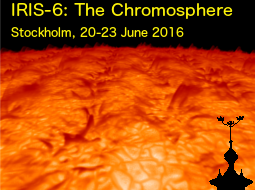Speaker
Peter Levens
(University of Glasgow)
Description
Coordinated observations of solar prominences can be a challenge to perform, and even
more so to analyse. During international campaigns in 2014 and 2015 we focused on
studying tornado-like prominences with a combination of space-based satellites (IRIS,
Hinode and SDO) and ground based telescopes (THEMIS, Meudon MSDP). We measured the
magnetic field strength and orientation in these tornado-like structures using the He
I D3 line from THEMIS, and studied the prominence plasma behaviour at a range of
temperatures using IRIS, Hinode and SDO. Through a robust 2D cross correlation method
to co-align data from the different instruments, we are able to probe plasma and
magnetic properties in the prominence on a pixel-by-pixel basis, allowing for
analysis of conditions in the tornado. We present data from 15 July 2014, wherein we
show spectral analysis of the Mg II h and k lines from IRIS, line profile analysis of
Hinode/EIS lines, and inversion results from THEMIS. We also study the relationship
between line profile shape and magnetic field for both the Mg II lines and a number
of lines observed by the Hinode/EIS instrument. In the optically thick Mg II and He
II lines we mostly see cool loops and threads of material in this prominence. In
coronal lines from EIS and SDO/AIA we see the tornado-like columns as dark features
above the limb, absorbing the background emission. Mg II profiles show a mixture of
reversed and non-reversed profiles in the prominence, with the reversed profiles
mostly occurring where the magnetic field is strongest, reaching between 20 and 50 G
in some parts. There is a horizontal magnetic field in these structures, parallel to
the limb, which is unambiguous in our observations.
Primary author
Peter Levens
(University of Glasgow)

